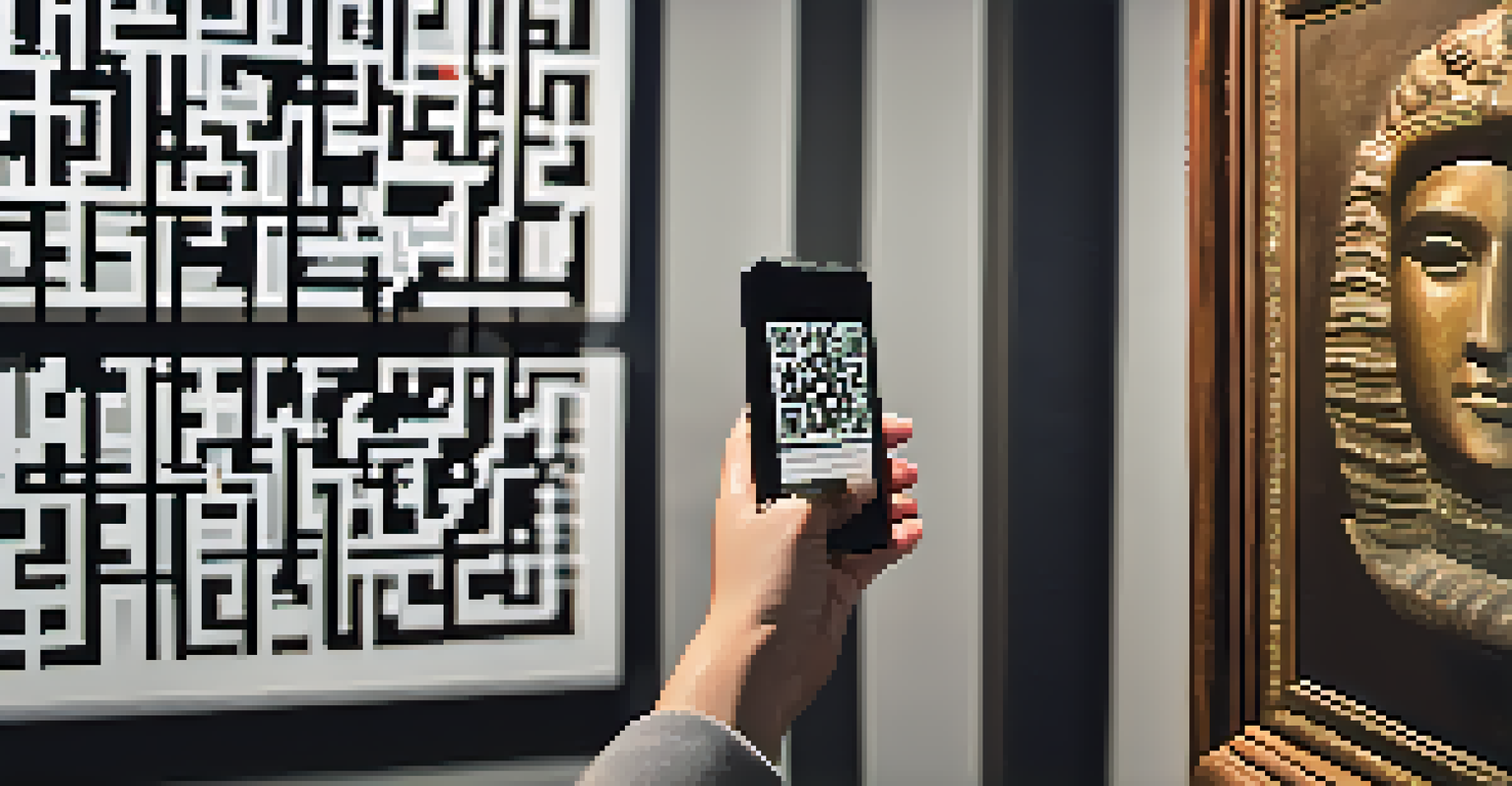The Future of Museums: Integrating NFTs for History Preservation

Understanding NFTs and Their Role in Museums
Non-fungible tokens, or NFTs, are unique digital assets verified using blockchain technology. Unlike cryptocurrencies, which are interchangeable, each NFT represents a distinct item, making them perfect for art and historical artifacts. This uniqueness allows museums to create digital representations of their physical collections, enhancing accessibility and engagement.
Art is not what you see, but what you make others see.
By integrating NFTs, museums can not only showcase their artifacts online but also create a new revenue stream through digital sales. Imagine owning a piece of history in the form of a digital token that ties back to a physical exhibit. This fusion of the digital and physical worlds offers exciting possibilities for both institutions and visitors.
As museums explore this new frontier, they can also preserve the provenance of their collections more effectively. Blockchain records every transaction, ensuring that the history of an artifact is transparent and secure, which is crucial for maintaining authenticity in the art world.
Enhancing Visitor Engagement Through NFTs
NFTs provide a novel way for museums to engage with their audience. By offering exclusive digital content, such as behind-the-scenes videos or 3D models of exhibits, museums can enhance the visitor experience. This not only makes the exhibits more interactive but also encourages visitors to share their experiences on social media.

Imagine walking through a museum and being able to scan a QR code next to an exhibit, instantly unlocking an NFT that provides additional information or a unique digital artwork. This kind of engagement can attract tech-savvy audiences and younger generations who value digital experiences.
NFTs Enhance Museum Engagement
By integrating NFTs, museums can offer unique digital content that enriches visitor experiences and fosters community.
Furthermore, NFTs can foster a sense of community among museum-goers. By creating a platform for collectors and enthusiasts to share their digital assets, museums can build a vibrant online community that extends beyond the physical walls of the institution.
Preserving Cultural Heritage with Digital Tokens
Cultural heritage is invaluable, and the integration of NFTs can help preserve it for future generations. By digitizing artifacts and creating NFTs, museums can ensure that even if the physical items are damaged or lost, the digital records remain intact. This aspect is particularly important in an age where climate change and other threats loom over our cultural treasures.
The future belongs to those who believe in the beauty of their dreams.
Moreover, NFTs can serve as a digital archive, allowing museums to document not just the artifacts, but also the stories and histories behind them. This comprehensive approach to preservation ensures that the context surrounding cultural items is not lost over time.
In essence, NFTs can act as a bridge connecting the past with the future. They provide a way to honor and remember our history while making it accessible to a global audience, fostering appreciation and understanding across diverse communities.
Challenges of Implementing NFTs in Museums
While the potential of NFTs is vast, museums face several challenges in their implementation. One major concern is the environmental impact of blockchain technology, particularly the energy consumption associated with minting NFTs. Museums must consider sustainable practices to align with their mission of preserving culture for future generations.
Additionally, there is the issue of digital literacy. Not all museum visitors are familiar with NFTs or how to interact with them, which could create barriers to engagement. Museums will need to invest in educational initiatives to ensure that all visitors can appreciate and access these digital assets.
Digital Preservation of Heritage
NFTs provide a means to digitize artifacts, ensuring the preservation of cultural heritage even if physical items are lost.
Finally, the question of ownership and copyright arises. Museums must navigate the complex legal landscape of digital ownership to protect both their collections and the rights of artists. This necessitates clear policies and guidelines to foster trust and transparency in the creation and sale of NFTs.
The Economic Impact of NFTs on Museums
Integrating NFTs can significantly alter the economic landscape for museums. By creating digital replicas of their collections, museums can sell these NFTs, generating new revenue streams that can support their operations and educational programs. This financial injection can help museums thrive, especially those that may struggle with traditional funding sources.
Furthermore, NFTs can attract a new audience of collectors and investors interested in art and cultural artifacts. As more people recognize the value of digital assets, museums can leverage this interest to boost attendance and engagement, ultimately enhancing their role in the community.
However, it's essential for museums to approach this economic model thoughtfully. They must balance the desire for revenue with their mission to educate and preserve culture, ensuring that they remain accessible to all, regardless of financial status.
Case Studies: Museums Successfully Using NFTs
Several museums have already begun to explore the world of NFTs with great success. For instance, the British Museum launched an NFT collection that features digital representations of their iconic artifacts, allowing a broader audience to engage with their collections. This initiative not only increased their online presence but also generated significant interest in their physical exhibits.
Similarly, the Louvre has explored NFTs by creating digital replicas of famous artworks, making them available for purchase. This strategy allows art lovers to own a piece of the museum's collection while supporting the institution financially, creating a win-win scenario.
New Revenue Streams for Museums
The sale of NFTs can create significant new revenue opportunities for museums, supporting their operations and outreach programs.
These case studies illustrate the potential impact of NFTs on museums. They serve as inspiration for other institutions looking to innovate and adapt in a rapidly changing digital landscape.
Looking Ahead: The Future of Museums and NFTs
As the integration of NFTs in museums continues to evolve, the future looks promising. We can anticipate a more interconnected experience where digital assets complement physical artifacts, enriching the visitor experience. Museums of the future may become dynamic spaces that blend the digital and physical worlds seamlessly.
In addition, as technology advances, we may see more sophisticated uses of NFTs, such as augmented reality experiences that bring artifacts to life. This could redefine how we interact with history, making it more engaging and immersive than ever before.

Ultimately, the successful integration of NFTs in museums hinges on a commitment to education, accessibility, and sustainability. By embracing this innovative technology, museums can preserve our cultural heritage while fostering a deeper connection with their audiences.